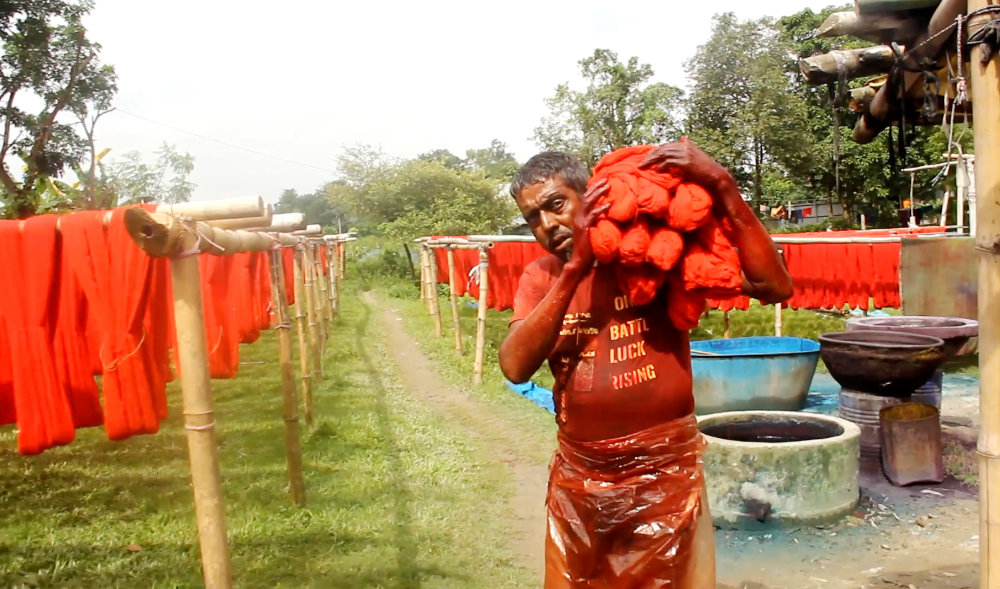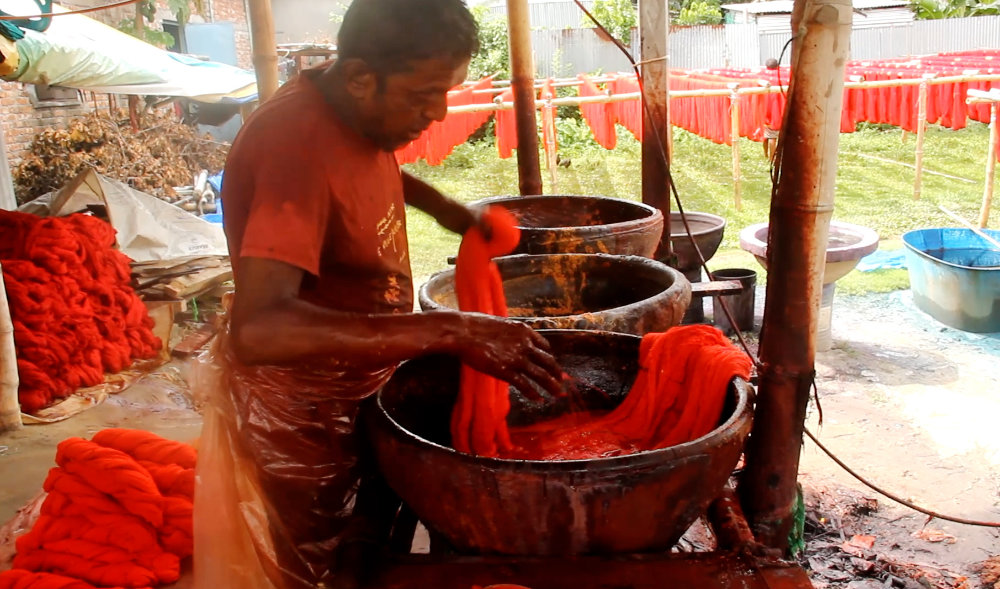DHAKA: When he starts work at 5 a.m., Mohammed Hasan will for the next 12 to 14 hours keep his hands immersed in water mixed with different dyes — from earthy to vivid hues, depending on the season’s latest fashion trends.
Sometimes Hasan’s skin will hurt, burnt by a cocktail of chemicals used to obtain a particular color. But he is used to it, like hundreds of others in Purinda, one of the villages in Narayanganj district which have gained fame — and notoriety — as Bangladesh’s “dyeing villages.”
Threads of all shades of the rainbow are hung to dry across Purinda, just 20 kilometers from the capital, Dhaka. Behind them, Hasan and his co-workers at dyeing mills are mixing and boiling salts, acids and emulsifiers to create these colors.
“To color the thread into red, we make a mixture of three to four colors. Then we rub the thread in that mixture. Later on, we soak the bundle of thread in another mixture of colors which makes the thread red,” Hasan told Arab News.
He earns about 22,000 Bangladeshi taka ($240) per month.
“This work is painful. But I need to do this to make ends meet. I have no other options in hand. Since I learned this work, I will have to do this,” he said.
“I couldn’t shape my life properly when I was young. So, now I don’t dream of making life colorful anymore.”

Dye mill workers coloring threads in Purinda Village, Narayanganj District, Bangladesh on July 27, 2022. (AN photo)
Mohammed Shafikul Islam, who began to work at a dye house in Purinda when he was a teenager more than 50 years ago, also admits that he has been experiencing skin lesions as his bare hands make contact with harsh chemicals every day.
“This work is very painful,” he said. “I might have been able to do other work. But I do this work because I learned this work.”
Skin problems are not the only hazards faced by workers.
Dr. ASM Mushiur Rahman, chief government health official of Narayanganj, told Arab News that dyeing factories in villages of Araihazar subdistrict do not follow any health protocols, do not have adequate protective clothing, and use chemicals that are not only harmful to the skin, but also to the lungs.

Dye mill worker in Purinda Village, Narayanganj District, Bangladesh on July 27, 2022. (AN photo)
“Starting from infections with the lungs it may end up with lung cancer,” he said.
“They suffer from bronchitis, cough, etc. We noticed that the number of tuberculosis patients is also high among the people who work in these industries.”
There is little awareness among workers and factory owners about the problem.
Mohammad Shahjalal Pradhan, who owns one of the dyeing plants in Purinda, admits that the business “has some limitations.”
He said: “The chemicals we use, they create bad smells. Some of our workers get affected with allergies.”

Dye mill worker coloring threads in Purinda Village, Narayanganj District, Bangladesh on July 27, 2022. (AN photo)
The textile sector, which includes dyeing factories, is the number one industry in Bangladesh, employing more than 4 million people, contributing to over 11 percent of the country’s gross domestic product and accounting for 80 percent of exports.
But there is a lack of comprehensive regulation, as dye houses are not officially recognized businesses, allowing owners to evade monitoring by industry regulators, even though the sites have existed for generations.
“These workers are treated as non-institutional laborers,” Selim Mahmud, president of the workers’ rights group Garments Sromik Front in Narayanganj, said.
“They don’t have any safety at their workplaces.”
Local authorities say that they are not even aware of the situation.
Rafiqul Islam, chief administrative officer of Araihazar subdistrict, told Arab News that the administration “didn’t know of these type of business entities earlier.”
He added: “Generally, we don’t inspect these sort of factories, but if we find any complaints against any business, we inspect it. So far, nobody told us anything about this.”














